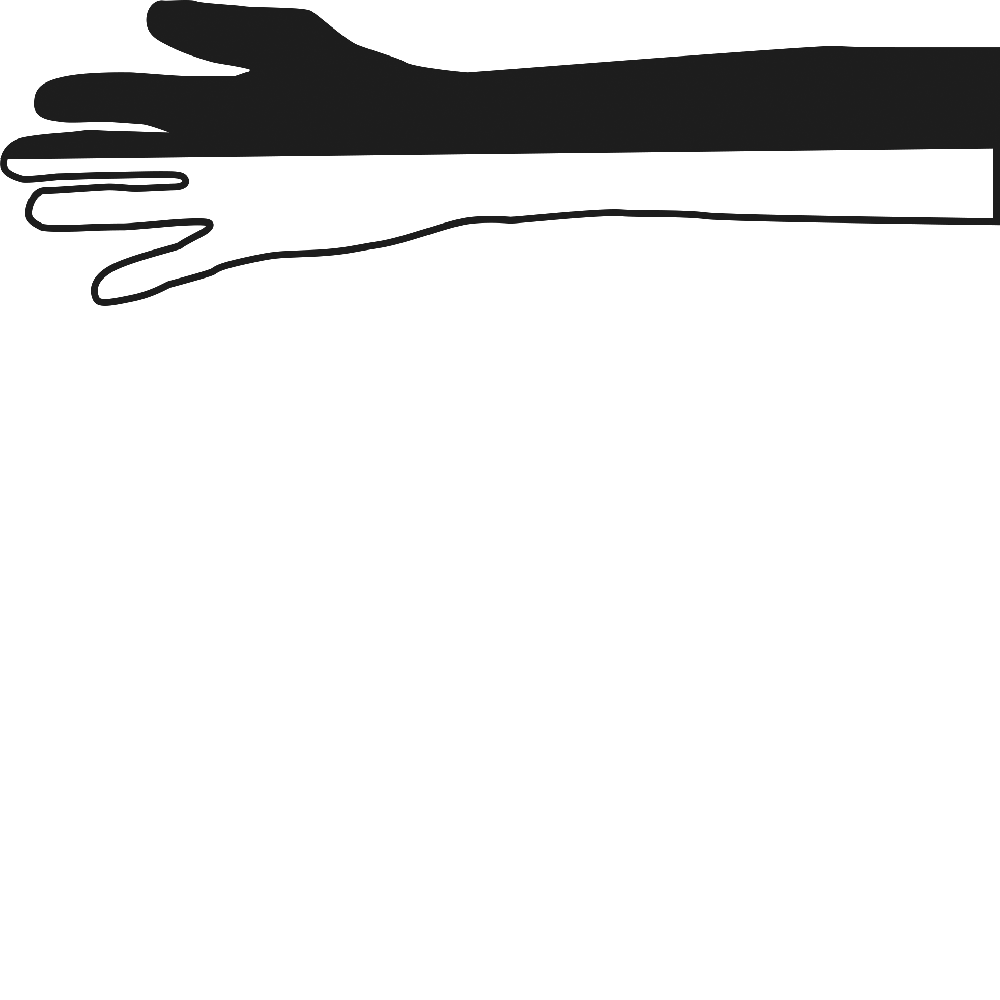Policy contains the promise to improve the ‘quality of life’, to create more jobs, to increase safety, to reduce pollution, to protect the environment, to further diversity, to eliminate all forms of discrimination—in short, to make things ‘better’. The objective of policy is to shape not only the material conditions in which people live and that make “living” possible, but also desire. In a certain way, policy turns us toward the ‘good life’, that is the life that “return[s] the debt of its life by taking on the direction promised as a social good.”1 Policy assumes that the ‘good life’ is not private, or purely personal, but contingent on all members of a society.
This paper is an examination of the ‘good life’ as envisioned in policy, and how Black people are positioned in relation to the ‘good life’. My point of entry is the intimate promise of ‘care’ and support in ‘quality of life’ and ‘behind the front door’ policies. Briefly stated, ‘behind the front door’ policies2 refer to a broad range of proactive care-giving programmes, such as ‘interference care’ and ‘outreach work’, which give ‘citizens with complex problems’ unsolicited assistance. What happens when public administrators adopt a proactive approach to care? What happens when we position care as the principal lens through which we analyze surveillance practices?
Care is a policing power that rarely registers as such. Care is, according to Carol Gilligan, a way of choosing what one considers to be morally significant.3 Providing care is considered almost without question as good practice. Practices of care often preclude a structural analysis of how power operates through the careful distribution of care. As such, what is often lacking in contemporary discourses on surveillance is attention to “the place of love, care, trust and enabling within surveillance systems.”4 Policies of care in the Netherlands are, on closer inspection, “rooted in the Dutch tradition of paternalism, in which great value is attributed to ‘caring’ forms of supervision.”5 Care, essentially, functions as “a mode of production that secures civic [and racial] relations.”6 [emphasis in original] Ann Stoler tells us that the intimate and the affective have always been strategic sites of good governance.7 Moreover, good governance is designed to shape how citizens affectively identify with and become invested in the ‘national interest’.
The ‘national interest’ is a moral concept, which positions certain practices as favourable, while others as detrimental to the flourishing of the nation. A lenient migration policy, for instance, is not considered to be in the nation’s interest. In 2005, D66 Minister of Kingdom Relations Alexander Pechtold agreed with Rita Verdonk that the influx of young Antilleans, ‘with poor life chances’, needed to be curbed.8 Christian Democrat Leonard Geluk, an Alderman in Rotterdam, supported Pechtold. In an interview with de Volkskrant9 Geluk states that Antillean criminals constitute a safety problem in the city. Geluk called for an unprecedented crackdown. He is quoted as saying that,
“The lives of those criminals must be made absolutely impossible. Much like we do with extremists.” According to the alderman, the parents of young offenders fail in their parental duties. ‘Antilleans, he said, are becoming more and more violent and extreme—even in their sexuality’. Bert Cremers, leader of the Labour Party in the Rotterdam city council, agreed stating that the “Antillean problem in Rotterdam is very serious.”10
Cremers went on to say that,
“The municipal executive board of Rotterdam has not developed an effective approach yet. Therefore, the tough language of Geluk is not appropriate. The current approach focuses on education and the family structure of Antilleans. However, a family is often lacking.” [...]
“Imprisonment does not always help. It often raises status. Attention is too often focused on the Muslims in the city. They are not the problem when it comes to safety—Antilleans are.”
The irrational fear of ‘Black violence’ and ‘excessive Black sexuality’ shape not only how the criminal justice system is organized and administered, but also how policy is devised.
A year later, Marianne van den Anker, Alderwoman in Rotterdam, advocated forced abortions and anti-conception for Antillean teen mothers, people with a cognitive, intellectual, or psychological disability, and mothers with a drug and/or alcohol addiction to prevent someone from being traumatized for the rest of their life. She stated that it was her ambition to “offer children in Rotterdam a better life.”11 [my italics] Van den Anker proposed a proactive child protection policy that would directly intervene either in the body’s chemistry, or in the womb, so as to prevent ‘suffering’ and ‘trauma’ in the lives of the yet-to-be born—in the face of an average infant mortality rate among Black women that is twice the rate for White Dutch women.12 What van den Anker’s proposal unveils is that violence can, and does, operate perfectly under the sign of ‘good intentions’.
Piet Emmer, retired professor in the History of European Expansion and Migration, also deploys trauma in his diagnosis of the effects of the migration policy. In Postcolonial Migration: Stop Antilleans13 , he argues that the unencumbered migration of Antilleans has become a “national trauma.” By characterizing the arrival of Dutch Caribbeans—who have the Dutch nationality—as a national wounding, Emmer makes a clear and unambiguous statement about who makes up ‘the nation’. Further in the article, Emmer asks with feigned concern,
“Which family member is actually responsible for the countless immigrant minors and why don’t so many Antillean fathers want anything to do with their children?”
To drive his point further, he cites the high number of young single mothers of Antillean decent (read: Black), and underscores that these families are often “economically and socially weak” and the children in these families are “more at risk” to end up as criminals. Anti-Black immigration policies are primarily fuelled by an anxiety about a Black presence within the Netherlands, and “based on the certainty that black persons [are] inassimilable.”14 For a very long time, the Netherlands, as Dienke Hondius’ research shows, barred the entry of Black folk through “a highly selective process of enabling and restricting access.”15
Blackness materializes in policies, whether actual or proposed, as a sign of an increased risk of criminality, as sexually excessive, “as already unruly, violent, contaminated, and mentally deficient.”16 The ‘fact’ of Blackness conjures up a set of affects in Whiteness, ranging from fear to anxiety to anger to excitement; the ascribed features become material features of Black bodies. “If the black body is the site and cite of all ills,” as Anthony Paul Farley surmises, “then the white body is not.”17 There is a libidinal investment in anti-Blackness; it is a form of psychic health and well-being for the nation.The libidinal economy, that is “the whole structure of psychic and emotional life,” is “a dispensation of energies, concerns, points of attention, anxieties, pleasures, appetites, revulsions, and phobias capable of both great mobility and tenacious fixation.”18 It is a system that directs, controls, and shapes desire; it directs you towards the right kind of things, and away from the wrong kind of things. It connects Blackness to dangerous excess, and produces gut reactions, which are not a result of ‘objective’ calculation, but of a racial calculus.
Civil society has an affective investment in the total subjection of the Black—so much so that Black agency is acknowledged “only as it assume[s] the form of criminality.”19 The life conditions of Black folk in the wake of slavery—that is, “skewed life chances, limited access to health and education, premature death, incarceration, and impoverishment”20 — the physical and psychological costs of Emancipation—reinforce the myth of White superiority and Black pathology. Anti-Black policy, as a racial calculus of social control, places Black life “outside the drama of value” (Wilderson 2010, 298)—an ‘outside’ that is always-already mediated by relations of racial violence. Value requires negativity. Lindon Barrett asserts that negativity, and “the expended, the excessive invariably form the ground of possibilities for value.”21
The ‘good life’ is good, because—and only insofar as—it is not Black. In The Problem of the Human, Rinaldo Walcott writes that,
“Any social, political and cultural proximity to the ‘good life’ in the West still and again largely depends on our historical relationship to the hierarchical practices of colonial ordering and management, and on the ongoing purge of the Black from the category of the Human.”
He further notes that,
“one of the central conceits to remove Black people from Humanness is that Black people are constantly understood to be out-of-place.”
Walcott’s analysis of Blackness as being out-of-place, as outside the boundaries of the nation and Humanness, brings to mind Mary Douglas’s definition of dirt as “matter out of place.” “Dirt,” writes Mary Douglas, “is the by-product of a systematic ordering and classification of matter, in so far as ordering involves rejecting inappropriate elements.”22 And, as Fanon posits, “when one is dirty one is black—whether one is thinking of physical dirtiness or of moral dirtiness.”23
The phobic conception of Blackness as dirt that needs to be swept off the streets animates the calculus not only of policy, but also of policing. Both policy and police centre on the administration of public order. The twin concepts of order and safety—to keep public space clean, whole, and safe—are central concerns of police power and policy makers. Policy and police are, in effect, tautological.24 Consider, the following statement of police detective Cor Louwers, as cited in the policy programme of the fourth Balkenende cabinet,
“Social problems arise behind the front door. We can only do so much on the street; it is mainly about the situation in people’s homes. District teams have to focus, thus, more on the people’s personal circumstances.”25
Consider, the term of endearment Ome Agent, meaning uncle cop, which gestures toward a fictive kinship between the police and citizens, and suggests the police’s implicit right to intimate familial spaces.
Policies orient us and ‘Behind the Front Door’ policies, in particular, establish a direction. Front doors mediate between the public and the intimate. The front door is imagined not only as a passageway through which disorder could flow, but as an impediment to police work. As such, policing and policy shouldn’t stop at the immediate, but needs to engage what is behind social problems—that is, the realm of the private and intimate. Behind gestures toward the cause of social problems as it establishes an orientation ‘point’. ‘Behind’, then, suggests not only a spatial, but also a speculative order—the unseen place from which social problems emanate.
‘Behind the front door’ policies aim to bring order in the private sphere. It is through policy that intimacy is wedded to questions of the public order and ‘public interest’ as part of the enforcement of rule of law. At the heart of ‘interference care’ lies the regulation of intimacy, privacy, and care in the service of public order. Moreover, interference care blurs the relationship between affect and politics, between family and polity, and between police work and social work.
In At the Intersection of Safety and Care the authors write that a lot of contemporary police work concerns itself with “‘the most vulnerable members’ of society, such as single-parent families, multi-problem families, people with disabilities and/or low income, addicts, the homeless and mentally ill.”26 Police work has converged not only with social work, but also with healthcare. According to the Dutch police, “[p]olice and healthcare complement each other,” which has led the police to assert that “safety and health care are closely linked.” The police assert that there is “a large overlap of the target groups of police and (health)care. When it comes to care it is primarily focused on public health, and Public Mental Health Care (OGGGZ) in particular.”
Policy is what gathers people, or that which makes people gather. Safety policies are ways of constituting a normative publics, that “magnetize optimism about living.”27 The “Safety Index” used to gauge ‘liveability’ facilitates a spatial sorting on ‘ethnic grounds’. It includes an “ethnicity” variable to the effect that a district in which relatively many Allochtoon people live automatically gets a lower rating on the index.28 In determining the liveability factor in neighbourhoods, Blackness constitutes a ‘safety problem’. The Blackness of Black neighbourhoods must disappear in order to ensure liveability, and secure a sense of safety for White folk. Black people are, thus, marked as corrupting, disposable, and targeted for removal precisely because we are seen as threatening the ‘quality of life’. Whiteness is more than race; it is also a spatial project.
Steve Martinot and Jared Sexton argue that for White people, “the security of belonging accompanies the re-racialisation of whiteness as the intensification [my italics] of anti-blackness. The police elaborate the grounds for the extension of a renewed and reconfigured white supremacist political economic order,”29 which brings Frank Wilderson to the conclusion that “White people are not simply ‘protected’ by the police, they are the police.” Policing as social policy makes certain that some social ‘targets’ become more visible, or legible, than others. Surveillance zeroes in on bodies that arouse feelings of uneasiness, contempt, disgust, anger, shame, guilt—and especially terror. When preventive stop and searches, which target predominantly Black people and non-Black people of colour, are part of a city’s “safety policy,” then whose security is being protected? By design, policy and law can only distribute, by way of police violence, freedom, safety, security, and justice only for White people.
Anti-blackness constantly constrains, in the service of ‘quality of life’ and the ‘public interest’, Black life, and continuously threatens to stymie the possibilities of Black sociality. The lack of Black participation in civil society is continuously misread as a contingent failure of an inherently ‘progressive’ and ‘non-racist’ political regime. The reasoning goes something like this: “if we make the political regime ‘more inclusive’, then more Black people will be able to participate.” However, what makes the administration of political life possible as such is the negation of Black presence, which “defines and regulates the regime of rights.”30
Moreover, Black voice is heard, or registered, only to the extent that it fortifies and extends the interlocutory life of the Netherlands as an ‘ethical project’ that is sensitive to the needs and concerns of Black people—meaning, only insofar as it acknowledges the legitimacy of the system. Wilderson points out in ‘Raw Life’ that “Black speech is always already terrorized speech.” (Wilderson 2013, 202) The Netherlands, as a ‘progressive state’, harnesses personal and collective gender and race performances in order to justify organized violence by subsuming it under the rubric of ‘policy’ or ‘regulation’. Policy determines what kind of institutional work race will perform. Policy determines why, when, and how race makes a difference.
Demands to reform and repair the system do not put an end to the terror and violence inflicted upon Black bodies. In Scenes of Subjection, Saidiya Hartman tells us that “the proposed remedies and correctives to [structural racism]—inclusion, protection, and greater access to opportunity—do not ultimately challenge the economy of racial production or its truth claims or interrogate the exclusion constitutive of the norm but instead seek to gain equality, liberation, and redress within its confines.” (Hartman 1997, 234) Similarly, Barnor Hesse reminds us that “western democracies promote racial equality and [simultaneously] sustain racial inequality.”31 Liberal anti-racism narrates ‘progress’ and ‘change’ as an accumulation of power and value.
Anti-Black racism is seen as individual prejudice, rather than as a productive political spectacle that is routinely performed across and within a wide range of institutions. It is not understood as an active political project but as a (temporary) disruption of an otherwise inherently equal society. As such, the accusation of racism does not register as an articulation of a political analysis, it is seen as a moral condemnation. Anti-racist policy is often seen as doing good, rather than a political action. Black folk are haunted by benevolence and benevolence comes with oppression based on morality, which provides the basis for a ‘caring paternalism’ that leads to offering unwanted services or advice to the ‘vulnerable’, who are expected to welcome the curative capacities of ‘benevolent interventions’.
The experience of Black people with and in the Netherlands has been—despite ‘reforms’, ‘progress’, and ‘anti-racist policies’—one of perpetual racial injustice. The Netherlands is an unethical formation. The nation-state is an anti-black formation. A demand for more public policy should not be the end point of our organizing.
Transcribed from March 2015 presentation
References (Endnotes)
- Ahmed, Sara. Queer Phenomenology: Orientations, Objects, Others. Durham: Duke UP, 2006. 21. Print.↩
- Pekelsma, Simone. ““Behind the Front Door” – Outreaching Social Support in the Netherlands.” URBACT Blog: For Cities, By Cities, About Cities. Web. 6 July 2015.↩
- “Moral Orientation and Moral Development.” Justice and Care: Essential Readings in Feminist Ethics. Ed. Virginia Held. Boulder, CO.: Westview, 1995. Print.↩
- Lyon, David. “An Electronic Panopticon? A Sociological Critique of Surveillance Theory.” The Sociological Review 41.4: 653-78. Print.↩
- Spierenburg, Pieter. “From Amsterdam to Auburn: An Explanation for the Rise of the Prison in Seventeenth-century Holland and Nineteenth-century America”. Journal of Social History 20.3 (1987): 439–461. Web.↩
- Lichtenfels, Peter, John Rouse. “‘Raw Life’ and the Ruse of Empathy.” Performance, Politics and Activism. Palgrave Macmillan, 2013. 186. Print.↩
- Stoler, Ann Laura. Carnal Knowledge and Imperial Power: Race and the Intimate in Colonial Rule. Berkeley: U of California, 2002. Print.↩
- “Toelating Kansarme Antillianen Aangescherpt.” Elsevier. 11 May 2005. Web. 6 July 2015.↩
- Effting, Maud, and Ron Meerhof. “ANTILLIANEN ZIJN DÉ PRIORITEIT.” De Volkskrant. De Persgroep Digital, 19 Nov. 2005. Web. 6 July 2015.↩
- “‘Criminele Antillianen Aanpakken’“ RTV Rijnmond. RTV Rijnmond, 19 Nov. 2005. Web. 6 July 2015.↩
- Fogteloo, Margreet. “« Ik Snap Het Dilemma Heel Goed».” De Groene Amsterdammer. De Groene Amsterdammer, 24 Mar. 2006. Web. 6 July 2015.↩
- “ Babysterfte in De Bijlmer Hoogste Van Nederland.” AD.nl. De Persgroep Digital, 4 June 2012. Web. 6 July 2015.↩
- Emmer, Piet. “Postkoloniale Migratie: Stop De Antillianen.” NRC.nl>Archief. NRC, 10 Nov. 2007. Web. 6 July 2015.↩
- Bashi, Vilna. “Globalized Anti-blackness: Transnationalizing Western Immigration Law, Policy, And Practice.” Ethnic and Racial Studies 27.4: 584-606. Dr. Vilna Bashi Treitler. Web. 6 July 2015.↩
- Hondius, Dienke. “Access to the Netherlands of Enslaved and Free Black Africans: Exploring Legal and Social Historical Practices in the Sixteenth–Nineteenth Centuries.” Slavery & Abolition 32.3 (2011): 377-95. Taylor & Francis Online. Taylor & Francis Group. Web. 6 July 2015.↩
- Chen, Mel. “Lead’s Racial Matters.” Animacies: Biopolitics, Racial Mattering, and Queer Affect. Duke UP, 2012. Print.↩
- Farley, Anthony Paul. “The Black Body as Fetish Object.” Oregon Law Review 76.3 (1997): 457-535. Gender & Sexuality Law Blog. Columbia Law School. Web. 6 July 2015.↩
- Wilderson, Frank B. “Introduction.” Red, White & Black: Cinema and the Structure of U.S. Antagonisms. Durham, NC: Duke UP, 2010. Print.↩
- Hartman, Saidiya V. “Seduction and the Ruses of Power.” Scenes of Subjection: Terror, Slavery, and Self-making in Nineteenth-century America. New York: Oxford UP, 1997. Print.↩
- Hartman, Saidiya V. Lose Your Mother: A Journey along the Atlantic Slave Route. New York: Farrar, Straus and Giroux, 2007. Print.↩
- Barrett, Lindon. “Figures of Violence: Valuation, Authorization, Expenditure of the African American, and Other Ways of Telling.” Blackness and Value Seeing Double. Cambridge [England: Cambridge UP, 1999. Print.↩
- Douglas, Mary. “Secular Defilement.” Purity and Danger; an Analysis of Concepts of Pollution and Taboo. New York: Praeger, 1966. 36. Print.↩
- Fanon, Frantz. “The Negro and Psychopathology.” Black Skin, White Masks. London: Pluto, 2008. 146. Print.↩
- Police initially meant the same as policy. See: “Online Etymology Dictionary.” Online Etymology Dictionary. Douglas Harper. Web. 6 July 2015.↩
- Balkenende, Jan Peter, Wouter Bos, and André Rouvoet. Samen Werken, Samen Leven: Beleidsprogramma Kabinet Balkenende IV 2007-2001. Den Haag: Koninklijke De Swart, 2007. 55. Web. 6 July 2015.↩
- Van Dijk, Auke J., Frank Hoogewoning, and Sandra Ter Woerds. “Op Het Snijvlak Van Veiligheid En Zorg: Samenwerking in Uitvoering.” Het Tijdschrift Voor De Politie: 6. Print.↩
- Berlant, Lauren Gail. “Preface.” The Female Complaint: The Unfinished Business of Sentimentality in American Culture. Durham: Duke UP, 2008. xi. Print.↩
- Noordegraaf, Mirko. “Meanings of Measurement: The Real Story behind the Rotterdam Safety Index.” Public Management Review 10.2 (2008): 221-39. Taylor & Francis Online. Taylor & Francis Group. Web. 6 July 2015.↩
- Martinot, Steve, and Jared Sexton. “The Avant-Garde of White Supremacy.” Social Identities: Journal for the Study of Race, Nation and Culture 9.2 (2010): 169-81. Taylor & Francis Online. Taylor & Francis Group. Web. 6 July 2015.↩
- Amparo Alves, Jaime. “Neither Humans nor Rights: Some Notes on the Double Negation of Black Life in Brazil.” Journal of Black Studies 45.2 (2014): 143-62. Sage Journals. SAGE Publications. Web. 6 July 2015.↩
- Burtenshaw, Rónán. “ Raceocracy: An Interview with Dr. Barnor Hesse – Part 1.” Irish Left Review. Irish Left Review, 24 Oct. 2012. Web. 6 July 2015.↩



